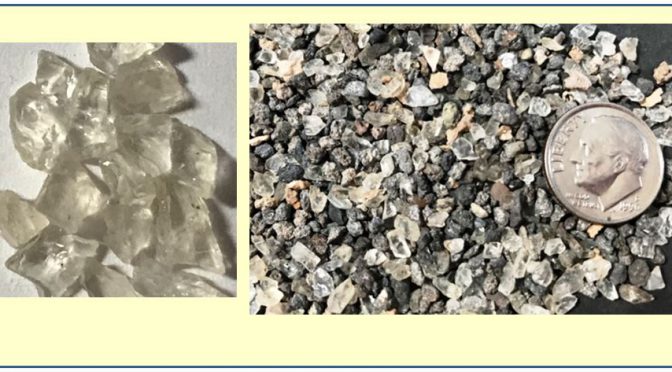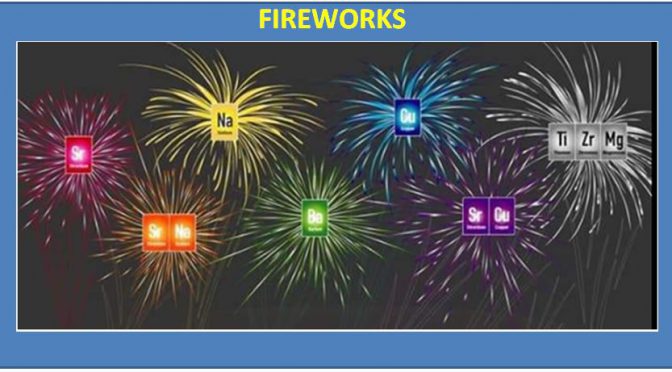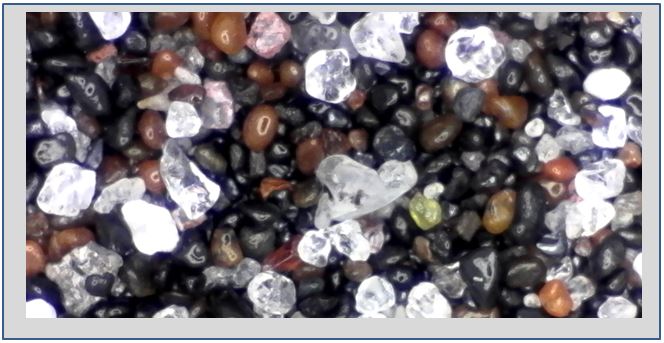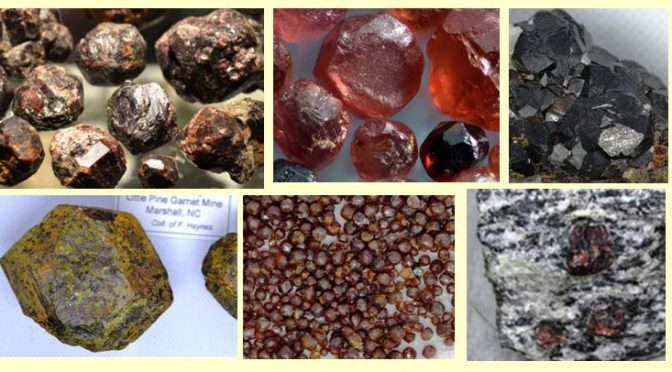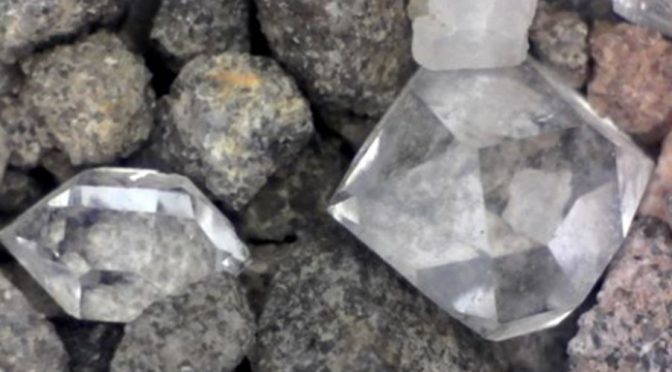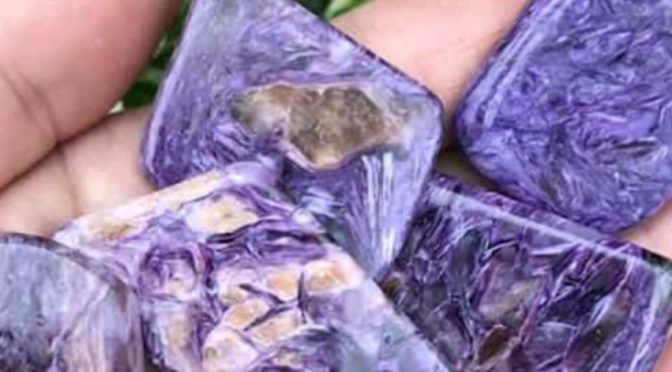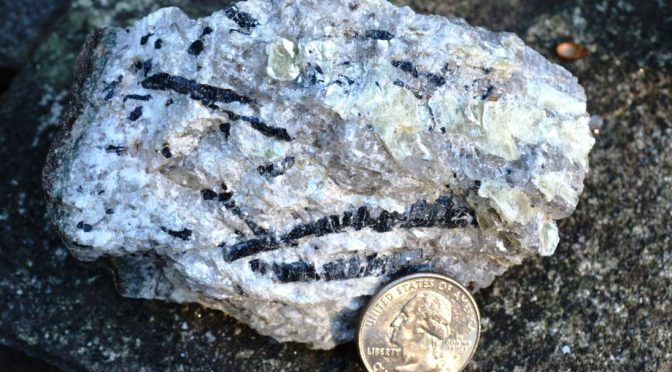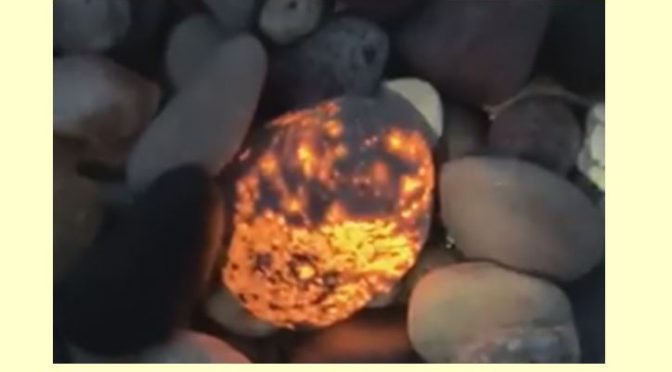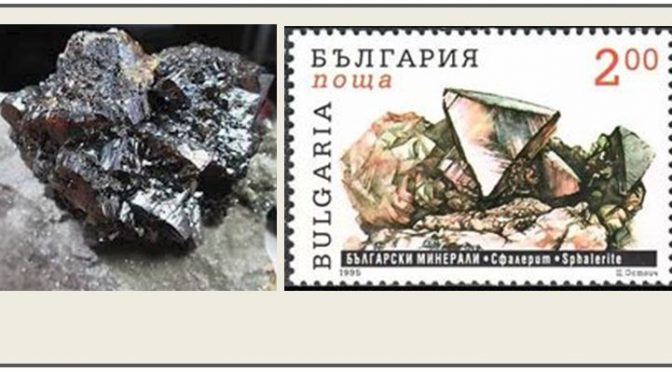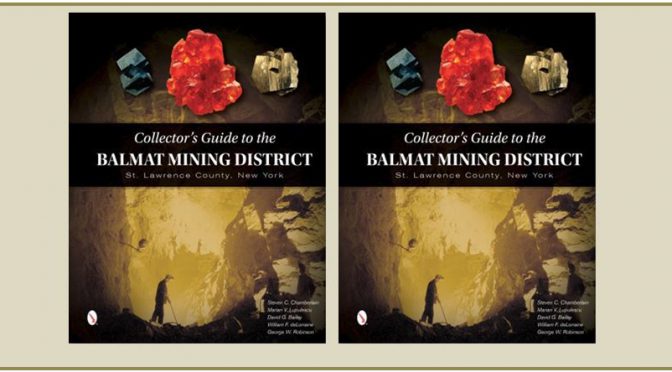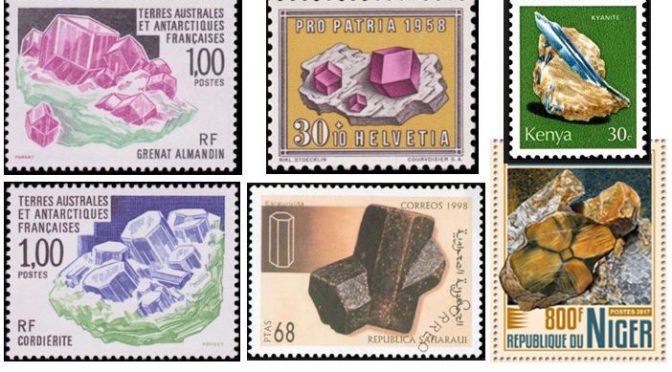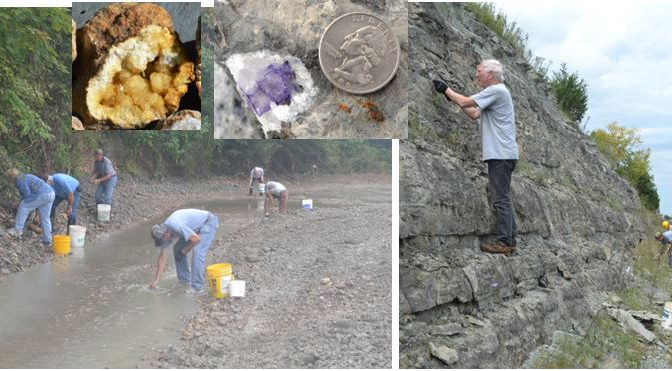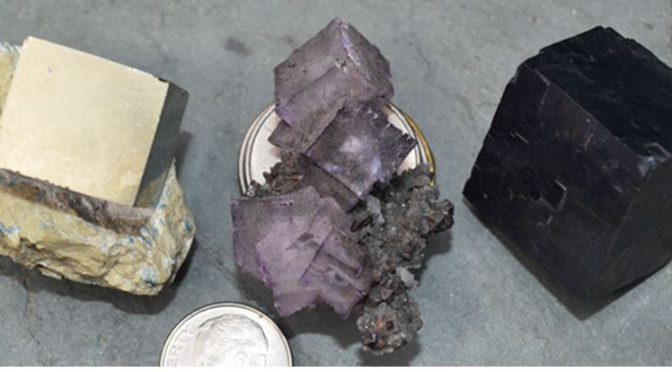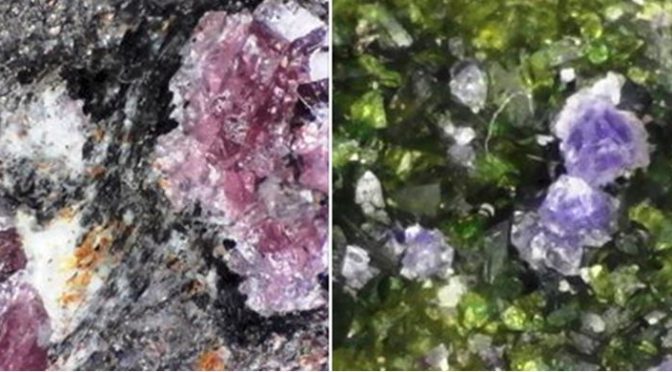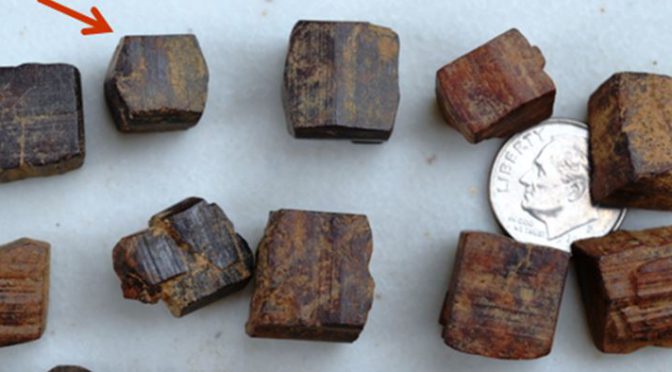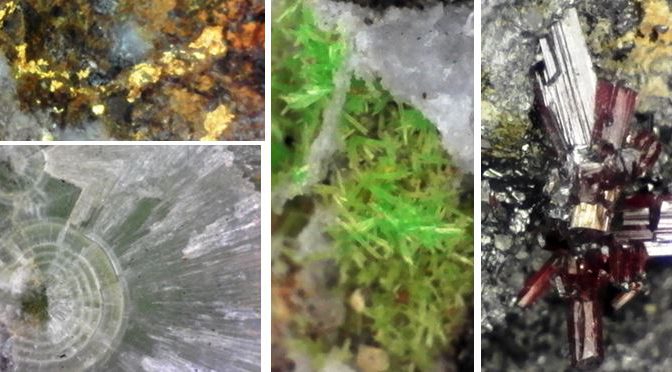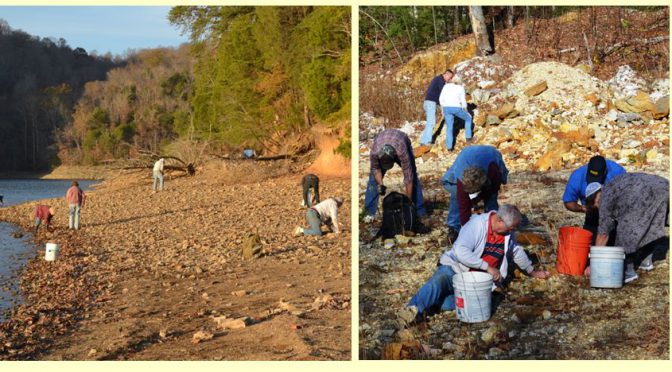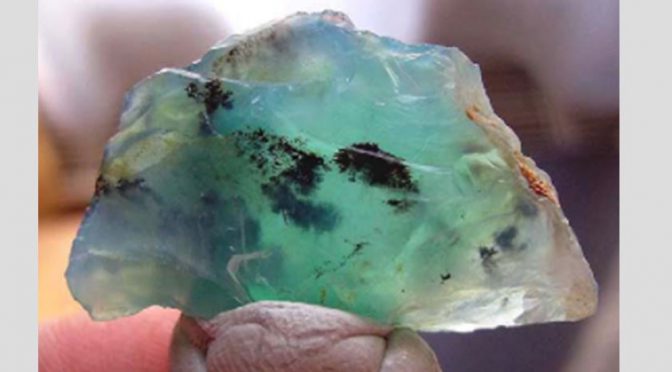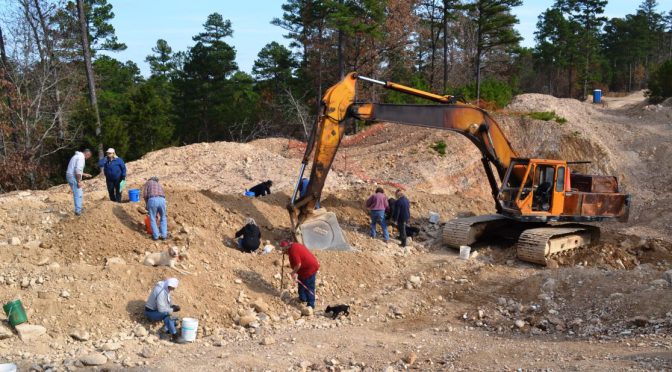This month I was working with “sand” that was actually too large to be technically called sand. Rather the grains were granules, the finest size fraction of gravel. I had obtained 200ml samples of four different gravels from Ed Tindell, a Texas collector, trading him gravels from northeast locations I had visited. One of my new samples was from Sunstone Knoll in Millard County, Utah. The gravel had accumulated in the alluvium shed from adjacent Sunstone Knoll. Ed had size-sieved a large sample and the material he sent me was from the 1/16” to 1/8” (1.7-3.2mm) size range, bridging the upper limit of sand, but mostly fine gravel or granules (see chart at the end of the article).
Category Archives: Minerals
Fireworks!
On July 4th, we celebrated our nation’s independence with fireworks. This year many public displays were canceled, but if your neighborhood was like mine, there were still plenty of pyrotechnics decorating the evening sky. The wonderful colors are all part of simple elemental chemistry and most owe their origin to minerals and chemical compounds (metal salts) produced from those minerals.
A Phosphatic Sand Beach
Some sand can be appreciated purely for its color and appearance. Other times the shapes of the grains or the overall texture of the sand makes it stand out when compared to others. Of course, a unique geology or an unusual mineral component can help to distinguish a sand also. Occasionally a beach comes along where the sand displays all three attributes. I consider the phosphatic sands from Caspersen Beach in Venice, Florida to be such a sand.
Collecting Garnets
The spring of 2020 was not a time for collecting and it appears the summer may not be much better. But that does not preclude me from reminiscing about a few past trips and finds. And I have decided to do that with a focus. I am going to think about all the places that I have been with Wayne County Gem and Mineral Club where garnets could be collected. Not only is this club “always looking for places to dig”, but they are pretty darn good at finding them.
Herkimer sand
On April 1st, Wayne County Gem and Mineral Club was planning to open its 2020 field season with a visit to Ace of Diamonds in Middleville, NY. The coronavirus has intervened with our plans and this annual rite of passage is not possible this year, but we can spend time enjoying the Herkimers we have collected on past trips.
For most folks these are small- or modest-sized crystals collected from the piles of rock the owners have hauled from their active, off-limits, mining area behind the hill. And I certainly spend time digging and breaking large rocks in search of centimeter or inch-sized diamonds. But, when the club visited last October, just before the site went into its annual hibernation, I did something a bit different.
Charoite
Who likes purple minerals? It seems just about everyone likes purple minerals and there will be a few choice ones at the Wayne Country Gem and Mineral Club auction on February 14th. Yes, the auction this year is on Valentine’s Day. Someone is going to go home with a brilliant amethyst piece, but you will have to come to the auction to see how purple it is and whether it is from Brazil or Uruguay. There might also be lepidolite or bismuth or fluorite or other purple goodies.
But this note is going to focus on another purple favorite. Almost every month someone arrives at the workshop with a small slice of purple charoite. The color captures the eye first, but the mesmerizing swirling pattern of the bands of charoite is irresistible if not a bit hypnotic.
Color of the Year
Each December, The Pantone Color Institute announces its “Color of The Year” for the coming twelve months. Everyone from furniture makers to jewelry designers to car companies, and, I suppose, to mineral dealers, takes notice as they plan their upcoming year products.
The Pantone Color of the year for 2020 is Classic Blue. In making this announcement on December 11th, Pantone describes Classic Blue as “where sky and sea meet” and they suggest that folks who want to sport the 2020 color do so through “accent pieces such as a scarf or a watch strap, or perhaps a vase or candle for your home or office.” This is all well and good, but mineral enthusiasts might want to know what mineral best typifies this choice.
Barrus Farm Pegmatite
The Barrus Farm pegmatite outside the small hamlet of Lithia, MA has become a regular stop on Wayne County Gem and Mineral Club’s western New England field trip each of the past three years. It is not a large site and the pegmatite there has never been quarried, but it does hold a special place in the world of gemology. It is the type locality for goshenite, which is white beryl. Yale University mineralogist Charles Sheppard identified the Barrus Farm white beryl in 1884 and named it after the town of Goshen about 3 miles east of the location. Continue reading Barrus Farm Pegmatite
Fluorescent sodalite in Great Lake States
Perhaps you have heard of the latest collecting craze in the Upper Peninsula of Michigan? Beach collectors who have generally restricted their collecting to agates, amygdaloidal basalt, and perhaps an occasional greenstone are now returning to the beach after dark with a long wave UV light source. They are finding beach rocks that are bright yellow when subjected to a 365 nanometer long wave light source. Apparently there are some beaches where these stones are relatively common.
How do you spell ZnS?
Our favorite minerals come in many forms and colors and it is fun to collect the variety that is available. But did you ever stop to think how many different spellings there are for your favorite mineral in all the world’s languages? One way to get started on such an investigation is through worldwide postage stamps. Here is an example using the important sulfide mineral from which most of the world’s zinc is resourced. There are certainly more languages than represented by these stamps from 12 countries and ten languages, but they do cover the world!
A Book Review: Balmat Mining District
Do you need an idea for a gift for that favorite mineral collector on your shopping list? Or perhaps you are like me, and you are looking to buy yourself a nice present? In either case, I may have the perfect book idea for you. How about “A Collector’s Guide to the Balmat District”?
Porphyroblasts
Porphyroblast: I’ve always thought that was such a neat word, maybe even interesting enough for a story. Say it out loud three times (“pore-fur-o-blast, pore-fur-o-blast, pore-fur-o-blast”). Now don’t you want to learn more, perhaps even own a few?
Porphyroblasts are those large recrystallized minerals that grow in the groundmass of a metamorphic rock, most typically in schists and gneisses. In New York State, we immediately think of the bright red almandine-pyrope garnets in the gneissic rocks in the Gore Mountain area, but the truth is the metamorphic schists and gneisses throughout New York and New England often contain garnet porphyroblasts. Unfortunately a lot of New York’s garnets are hosted in high-grade metamorphic gneiss and they don’t display crystal faces when the rocks are broken. Nevertheless they are large, colorful and fun to collect.
A Lot of New Places to Dig
There are many reasons to plan and participate in joint club trips like the recent Labor Day trip to Kentucky where folks from several clubs joined together (see acknowledgments at the end of this note). The obvious is new places and new friends and we sure encountered both during our three days in Kentucky.
Isometric Minerals
Perhaps you are familiar with mineral dealer David Joyce’s song about “Crystal Systems” and the refrains about the isometric system. They go something like this:
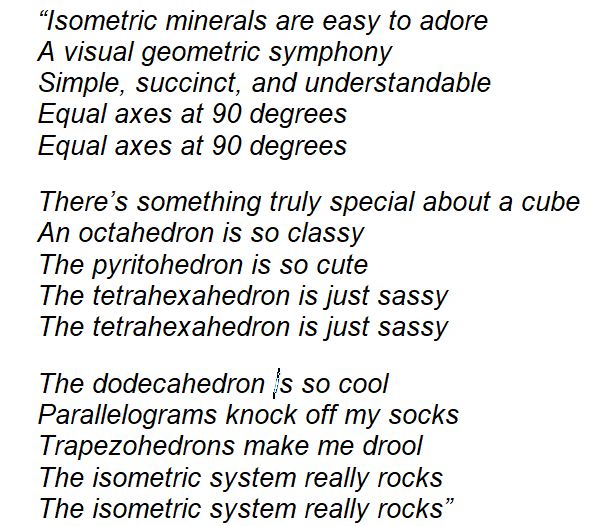
You can hear the remaining verses and lyrics here. . And read a review of his full CD in our July 2017 newsletter. You will find that David is not as complimentary about the other crystal systems.
BUT, did you know that despite the myriad of modified isometric forms that minerals like pyrite, galena or fluorite can display, there are only six basic isometric crystal forms. It is the interesting and often complex interplay and superpositioning of these forms that create the aesthetic beauty.
Massachusetts Micromounts
One of the sites I visited with the Wayne County Gem and Mineral Club during the June Massachusetts trip was the large dump beside the Quabbin Aqueduct shaft #10 in Hardwick, Massachusetts. The 25 mile aqueduct connecting the Quabbin Reservoir to Boston was completed in 1939 and has been a primary source of water for the Boston region ever since. Rocks excavated from the #10 shaft include the Hardwick granite, the Monson gneiss, and a number of other metamorphic rocks. The dump is expansive and although it is becoming overgrown it remains a popular site for mineral collectors.
Lancaster, PA for pseudomorphs
On arrival the location does not look like a typical mineral collecting site. There are not any rocks to be seen. The GPS coordinates provided by Beard (2013) are smack in the middle of a cultivated field filled with small evergreen trees just off Fruitville Pike in Lancaster, PA. The field is flanked on two sides by subdivision housing and on a third side by a pair of little league baseball fields. Your first thought is that you botched the directions. Continue reading Lancaster, PA for pseudomorphs
zOrb65x Digital Microscope
I purchased a new toy in March. I acquired a Carson zOrb 65x Digital Microscope. Although not a tool for advanced photographers, I hoped that it would give me a simple tool for illustrating details I could not depict well with my Nikon. And for $50 I decided it was worthy of an experiment.
Collecting In North Carolina and Tennessee
Last month I wrote about the Arkansas portion of Wayne County Gem and Mineral Club’s November field trip south (quartz, quartz and more quartz). But we did not stop there. After three days of collecting SiO2 in and around Mt. Ida, Arkansas, ten of us pointed our large black van east and headed to Tennessee and North Carolina. There was still a bit of space to fill in the van and in the trailer and we simply could not head north without filling all possible nooks and crannies. Here is how we did it! Continue reading Collecting In North Carolina and Tennessee
Peruvian blue opal
Wayne County Gem and Mineral Club throws a marvelous Christmas party each year and 2017 was no exception. When it came time for me to select my club gift from the table of bright red boxes at the holiday party I did not hesitate. I took one from the middle of the back row and went back to my table to see what I had been gifted. I was not disappointed. I opened my bright red box and pulled out a colorful blue layered rock. The label simply said “Peruvian opal”. I was pleased for two reasons: first I did not have any opal from Peru, but more importantly I knew nothing about it. I would have fun back home while the snow fell outside researching my new “acquisition”. A third bonus: as a rough piece, it will also give me something to cut and polish at an upcoming workshop. Continue reading Peruvian blue opal
Arkansas for QUARTZ
In November of 2017, Wayne County Gem and Mineral Club undertook a 9 day collecting trip to Arkansas-Tennessee-North Carolina. This is mostly a photo essay from the first half of the trip in the Arkansas quartz district of Mt. Ida and Jessieville. Published in WCGMC December 2017 newsletter. Part II on the rest of the trip will follow.
3300 miles and 3300 pounds of Arkansas quartz: the miles are accurate, but the weight may be a bit of an understatement. Once someone started putting large clusters and quartz-covered pieces into the trailer (I think it was Glenn!) it seemed contagious. Everyone simply needed more! Buckets were filled at three sites, half bushel baskets with crystals encased in red Arkansas mud were purchased, we traded for yet more, and eventually even the spaces under the seats in the van were dedicated to Arkansas quartz. And we hadn’t even headed to North Carolina yet!
